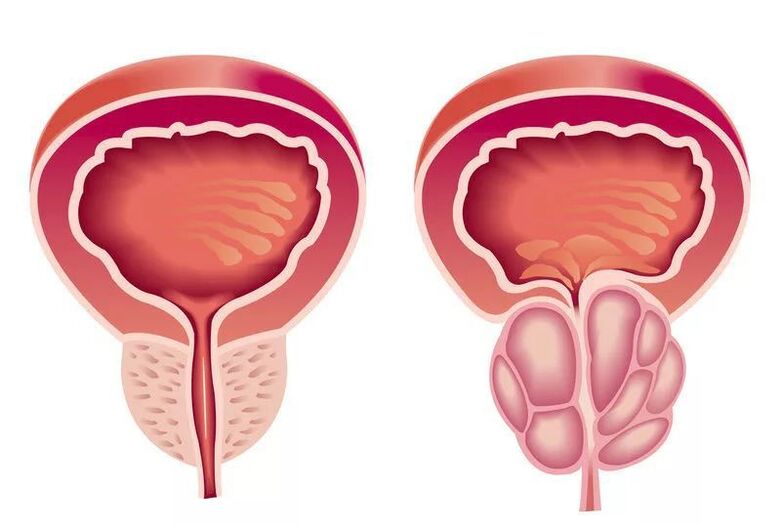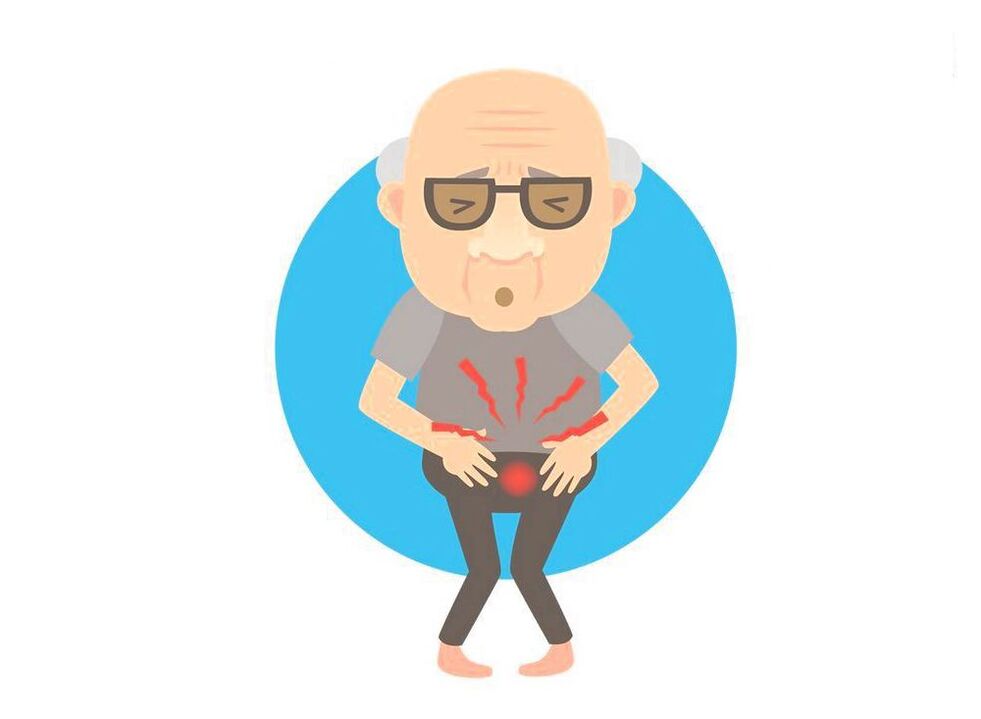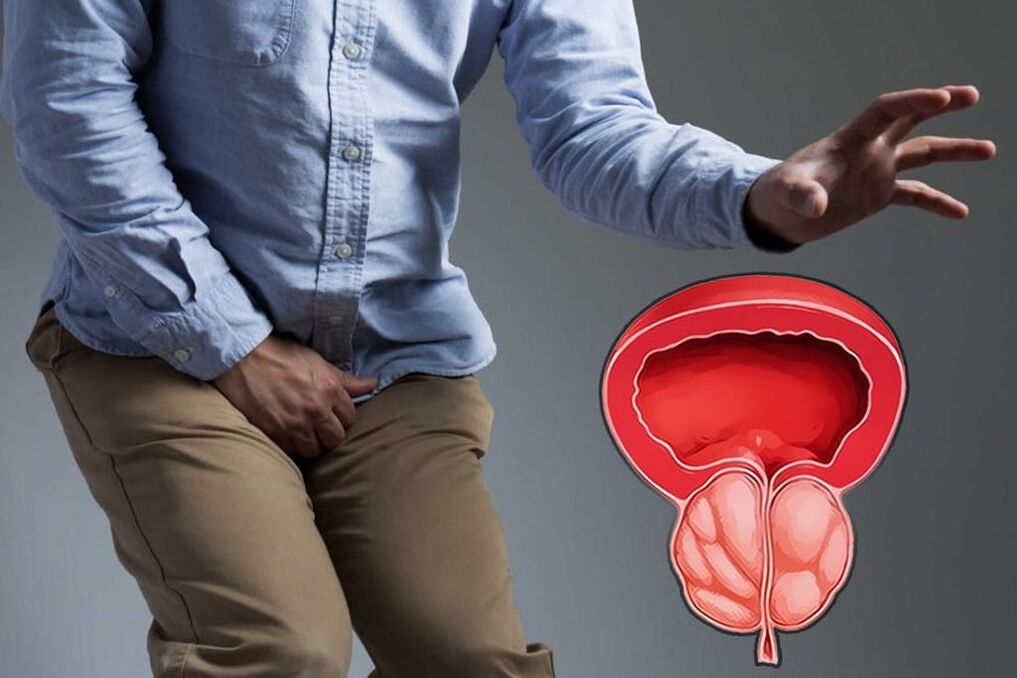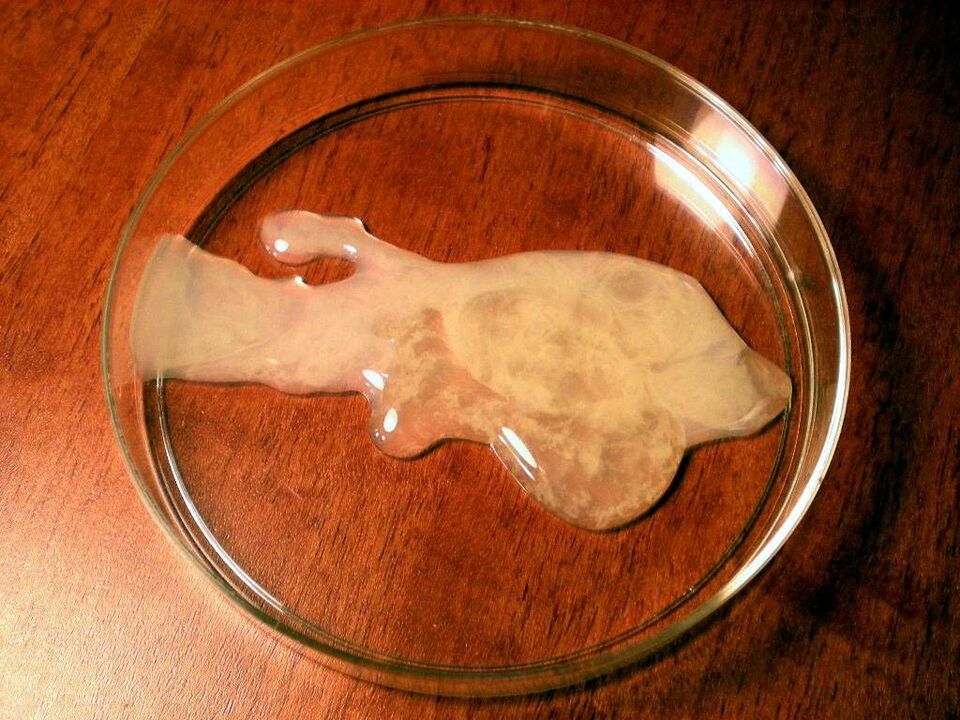Prostatitis today ranks first in the group of male diseases, transmitted mainly through sex. Its complications threaten infertility, decreased libido, impotence.
The first symptoms of prostatitis in men
Prostatitis is an inflammatory disease. This is one of the most common urological pathologies, diagnosed in representatives of the strong half of humanity.
Usually, this abnormality is detected in men over the age of thirty, although recently the disease has become much younger. Treatment of prostatitis should be carried out by qualified specialists (urologists or endocrinologists), as there is a greater likelihood of developing various complications.

How is prostatitis treated?
With the help of drugs
- NSAIDs - reduce inflammation, fever and fever. They have a mild analgesic effect. At the onset of prostatitis, short-term treatment with anti-inflammatory drugs and oral vitamins is required to maintain the gland in a normal state. Men prescribed: Diclofenac, Nise, Voltaren, Nimesulide. The drug is produced in the form of suppositories, tablets, injections.
- Antibiotics - designed to eliminate the infectious factor or bacteria that cause inflammation. Prostatitis treatment protocol is signed after the pathogen has been identified and tested for antibiotic resistance. The course of treatment is 7-10 days. In severe cases, therapy is extended to two weeks.
- Hormones are recommended if the usual course of medication is not beneficial, as well as when sexual desire is reduced due to advanced disease. It is forbidden to treat with hormones in the early stages. The drug is taken under the strict supervision of a urologist.
- Symptomatic drugs - to get rid of the pain syndrome, take aspirin tablets. Spasms are eliminated by No-shpa. For persistent severe pain, blockade with Novocaine is indicated.
- Vitamins and medications to keep the prostate gland functioning properly. During remission, it is recommended to take drugs to normalize metabolism and improve blood supply to glandular tissues, and juice production. For this, plant preparations are prescribed: Prostamol-Uno, Prostate-forte and the like. To strengthen the immune system, a complex of vitamins and minerals is shown: Duovit, Vitrum.
Self-medication is very dangerous, it does more harm than good. Before taking any of these drugs, you should consult a urologist.
With the use of physical therapy
- UHF and microwave.
- Magnetic therapy.
- Mud healing.
- Zinc plated.
- Supersonic.
- Laser treatment.
- Heat therapy.
natural remedies
Diagnose
To start the treatment of prostatitis on time, you need to contact a competent specialist, who will conduct a thorough examination and make an accurate diagnosis. The list of recommended diagnostic methods includes:
- Blood tests - conduct a study of the biochemical composition, for the content of PSA (prostate-specific antigen), general analysis and PCR if necessary.
- Urinalysis - men are asked to urinate in different containers to conduct research in different ways.
- Scrape from the surface of the urethral canal to detect infectious pathogens.
- Bacteriological culture of prostate and urethral secretions to identify pathogenic bacteria and bacterial resistance to drugs.
- Prostate ultrasound - allows you to evaluate the size and shape of the gland, the presence or absence of fusion of tissues, adhesions and skin changes.

A mandatory item in the diagnosis of prostatitis is a digital rectal examination. Examination of the finger allows the doctor to feel the gland and assess its density, structure, shape, and size. In addition, during the rectal examination, the secret of the prostate gland is obtained, which will then be sent for analysis. Additional testing methods are indicated for each specific patient if indicated.
These can be urine flow velocity measurements, magnetic resonance or computed tomography scans, X-rays of the pelvic organs, and other methods.
Acute prostatitis
The disease begins with a sharp increase in temperature (up to 40 degrees), severe headache, fever. Symptoms appear along with pain in the groin, perineum, back, urethral discharge, frequent urination and a constant urge to urinate.
Bladder emptying occurs delayed, burning sensation. The urine itself becomes cloudy and there may be blood in it. There are signs of irritability and fatigue.
The result of acute prostatitis can be a process of complete resolution (with prompt treatment). Since the changes occur in many organs of the small pelvis, they cannot be left to chance, or the corresponding complications will arise:
- Orchitis is an inflammation of the seminal vesicles, which causes pus in the semen, which not only reduces the quality of ejaculation but also leads to impaired reproductive function.
- Colitis - inflammatory changes in the testicles become the reason for the development of severe pain during sexual intercourse, interruption of orgasm, impotence of a psychosomatic nature.
- The formation of an abscess in the body of the prostate gland, rupture, purulent lesions in the rectum leads to exacerbation of symptoms, a strong intoxication of the body, which can lead to death.
- Stagnation in the tissues of the prostate gland leads to a change in their structure, disruption of nourishment, blood supply, both to the main gland and to neighboring organs, to a violation of their functions. Erection becomes insufficient for a full intercourse, premature ejaculation, prolonged sex without starting orgasm.
- Changes in the inner membrane of the gland, spermatic cord lead to infertility, reduced sperm quality composition and sperm motility. Urethral stricture interferes with normal urination, bladder obstruction can cause acute urinary retention, requiring emergency surgery.
Main symptoms
As noted above, the disease can be chronic and acute. A common symptom and one of the most important is frequent urination. A healthy man usually has no more than 10-11 urinations a day (normal number is 5-6 urinations).
As a result of the development of prostatitis, which adversely affects the bladder, as a result, when infected, the following symptoms appear:
- Increased frequency of urination (while daily urine volume remains constant).
- Urine comes out in small parts, which is associated with the reception of false signals from bladder receptors due to the presence of an inflammatory process. In addition, there may be a feeling that the bladder is full even after urinating.
- Pain when urinating, caused by narrowing of the urethra due to an inflammatory process in the prostate gland.
- Difficulty urinating due to inflammation pressing on certain areas of the urethra. In some cases, men cannot clean their bags at all because of this.
- At night, the walls of the bladder begin to send false signals, increasing the number of bowel movements during sleep.

Part of the diagnosis of prostatitis can also be done by monitoring body temperature, along with problems related to urination. If these problems are accompanied by an increase in temperature to subfebrile and febrile values, then with a high degree of probability we can talk about the development of pathology. It is important to note that in the later stages of the disease, on the contrary, a drop in body temperature can be observed to 35. 5-36 degrees, which is an extremely negative and dangerous symptom in any case, thisshould not. licensed.
In the middle stage of the disease, blood can be observed in the patient's urine. This sign is relatively rare and usually not indicative, but is extremely dangerous. It can begin to manifest itself due to purulent fusion of the prostate gland, prostate trauma, and also in cases of complications of the inflammatory process with hyperplasia. The treatment in this case is very complex (often requiring surgical intervention).
Treatment should begin as soon as the first symptoms of the disease appear. If there is at least some, although not significant, as it seems, problems with urination, in some cases accompanied by fever and pain in the simple area, you should immediately make an appointment to see your doctor. urology to clarify the diagnostic problem. It is necessary to pay attention to the pathological signs described above, since only timely treatment can defeat prostatitis quickly and painlessly.
Why is the prostate gland inflamed?
In fact, there are only 2 main reasons:
- Infection. Often, prostatitis develops precisely because of an infected prostate gland. Infection can occur through the bladder, urethra, rectum, blood, and lymph. It turns out that often prostatitis itself is a complication of an existing disease. Therefore, never self-medicate, you must first cure the source of the infection. Cystitis, pyelonephritis, urethritis, STIs (sexually transmitted infections) - this is understandable, they are directly related to the prostate gland. Even tonsillitis, sinusitis, flu, tooth decay, if not completely treated, can return to haunt the inflamed prostate.
- Circulatory disorder. This may be due to structural features, and to urethral spasms, disorders of nerve conduction and activity of the abdominal and pelvic muscles, and also to external factors.
However, whether prostatitis develops or not, first of all depends on the influencing factors:
- A chaotic sex life. Having multiple sexual partners, especially those with unprotected contacts - this weakens the immune system, which is constantly confronted with the foreign microflora in a woman's secretions. And sooner or later it fails.
- Long abstinence. This is the other extreme. The lack of sex has a bad effect on the general condition of men, and especially on the prostate gland. Its bile is stagnant, blood circulation is disturbed, an infection develops.
- Masturbate. It occurs when men try to escape sexual deprivation by masturbating. However, this reduces the tone of the prostate gland, which becomes lethargic. It has even been isolated to a separate type of prostatitis - congestive.
- Excess weight. In overweight men, the load on the pelvic organs as well as the whole body in general is greatly increased. The blood supply is disturbed, because of this, prostatitis, hemorrhoids and a variety of other diseases occur.
- Hypothermia. "Don't sit in the cold, " they told all the girls. However, this also applies to men. At risk are lovers of extreme winter amusement, gluttonous fisherman, owners of old cars (oh, I often see men lying on cardboard undercars in the winter), even passengers on icy trains, as well as fashionistas with rolled up pants and no. hat. Oh yes, and peeing outside in the winter can have serious consequences, too.
- Inactive. Basically, this applies to workflow, when you have to sit in one place for a long time: driver, office worker. Crossing the legs is especially harmful because it only increases the load on the prostate.
- Stress. Psychological problems, chronic lack of sleep, overloaded work schedules are the causes of favorite infections.
- Suppress the urge to urinate. Is the 5 minutes saved in a hectic workflow worth the potential problems?
- Bad habits. Well, where without them? Abuse of alcohol and nicotine that just breaks.
- Wrong diet. Greasy, spicy, salty foods are magnets for diseases of the pelvic organs.
- background diseases. Any infection that is left untreated can turn into prostatitis.
- Tight underwear. As well as the "fashionable" tight pants. They compress the small pelvis, disrupt blood circulation, and cause swelling and inflammation.
- Physical overload. Professional athletes, porters, active visitors to the gyms are at great risk of getting sick.
- Self-treatment. Men are sometimes ashamed to admit their problems even to a doctor, they try to cure this disease with various, proven and not so good folk remedies. However, it happens that without medication prescribed by a competent doctor, one cannot cope here.

How is the disease diagnosed?
Diagnosis is established by a urologist or a gynecologistAfter examining the patient, collect the medical history and study the symptoms. The doctor needs to find out the patient's method of contraception, the presence of STIs in a sexual partner, and the possibility of anal intercourse without a condom. This data facilitates the diagnosis and guides the doctor's thinking in the right direction. Prescribing the onset of symptoms or perineal discomfort allows us to assess the course of prostatitis and its severity. The urologist necessarily examines the patient's genitals and conducts a rectal examination of the prostate. To do this, he inserts a finger into the patient's anus and gropes over the anterior wall of the prostate protruding into the rectum. Pain and its size indicate the intensity of the inflammatory process.
Next, the doctor conducts a series of instrumental, microscopic, bacteriological, and immunological studies to clarify the cause of the disease. The most common diagnostic method is to collect a 4- or 3-cup urine sample. The first method is more time consuming and difficult to implement in practice, as it requires the patient to intentionally interrupt urination repeatedly. The second modification is simpler: the patient repeatedly urinates into three different containers with equal portions. The first part talks about the state of the urinary tract, the second tells about the pathology of the bladder and kidneys, from the third they get information about the state of the prostate gland. All collected materials will be examined under a microscope. With prostatitis, white blood cells and sometimes bacteria are found in a third of the urine.
For microscopy, the secret of the prostate is also done.To do this, the doctor massages the prostate through the rectal wall for a while so that it is discharged into the urethra. Smears are made from materials collected in the lab, stained and studied under high magnification. One sign of inflammation is white blood cells, the bacterial root of which is bacteria in the stain. To determine the type of pathogen, the secret is sown on a nutrient medium. If pathogenic microorganisms are present, after 3-5 days they form colonies of microorganisms, which can then be studied.
Among the methods of instrumental diagnostics are performed:
- Renal ultrasound;
- TRUS of the prostate with dopplerography - an ultrasound probe is inserted into the rectum to get the best picture of the prostate, its blood flow is further evaluated;
- Incremental urographs are needed for persistent recurrent prostatitis. A radioactive substance is injected into the urethra, then a series of consecutive images are taken.
In addition to these methods, all types of research on STIs are of great importance. Among them are:
- PCR ejaculate, prostate secretion, curettage from the urethral mucosa - a method that allows you to detect a wide range of pathogens;
- Blood ELISA - to detect antibodies specific to STI pathogens.
Types of prostatitis
According to the National Institutes of Health (NIH USA) criteria since 1995, there are four types of prostatitis:
- Type I: Acute prostatitis;
- Type II: Chronic bacterial prostatitis;
- Type III: Chronic prostatitis/chronic pelvic pain syndrome (CP/CPPS);
- Type IIIa: Chronic prostatitis/chronic pelvic pain syndrome with inflammatory markers;
- Type IIIb: Chronic prostatitis/chronic pelvic pain syndrome without signs of inflammation;
- Type IV: Asymptomatic (asymptomatic) chronic prostatitis.
Occasionally, chronic granulomatous prostatitis, not covered by this classification, also occurs.
In turn, most experts distinguish between:
According to the course of the disease:
- acute prostatitis;
- chronic prostatitis;

Depending on the cause of the disease:
- bacterial prostatitis;
- non-bacterial prostatitis
In most cases (especially in men under 40 years of age), bacterial prostatitis is noted.
Based on this, there are:
- acute bacterial prostatitis;
- chronic bacterial prostatitis;
- chronic bacterial prostatitis.
Prevent
To prevent the occurrence of inflammation or the recurrence of chronic pathology, you must adhere to the following recommendations:
- Reduce alcohol consumption;
- Regular exercise;
- Avoid hypothermia;
- Quit smoking;
- Avoid stressful situations;
- Timely treatment of inflammation - first of all, this applies to infections of the genitals;
- Take a contrast bath;
- Avoid lifting heavy objects;
- Use barrier methods of contraception;
- Frequent sex;
- Take vitamin preparations;
- Participates in strengthening immunity;
- Visit a urologist twice a year;
- Eat right and balanced.
The purpose of the prostate gland in the male body: what is it responsible for?
The prostate gland is an exocrine gland in the male body.
Iron belongs to the reproductive system and is responsible for the production of several specific substances:

- The main substance is the secretion (secretion from the prostate gland), which provides the necessary viscosity for the sperm and, therefore, the normal motility of the sperm. When sperm is too dense, fertilization is difficult and a woman cannot get pregnant from a seemingly healthy man;
- Other components maintain the normal composition of sperm. These include biologically active substances, immunoglobulins, enzymes, vitamins, trace elements, etc. v . . . The norm of these substances is individual, and it is the prostate gland that regulates their content.
So she is responsible for a man's fertility, for his chances of having a regular and fulfilling sex life and having children. This is the main function of the gland, but there are other, equally important functions.

























